We started the day by catching a long tail boat for an hour across the Mekong in monsoonal rain. Upon arriving at the boat landing we had to make our way across five boats to get to shore, testing our balancing skills. When we had safely reached dry land we had to find the minivan bus we had booked to take us across the border and eventually stumbled upon it and managed to get a seat without showing our tickets. We usually prefer to take local transport as it's cheaper than transport provided specifically for tourists and we had also heard stories of the tourist transport not being reliable, but it seemed the best option for getting across the border was to take the package tour. Something we would come to regret.
The land border between Laos and Cambodia is one of the remotest in the region and we were soon to find out why as we drove down a long straight road and came to a stop in the middle of nowhere with two barriers across the road, one to leave Laos and the other to enter Cambodia. Tourists are treated like walking ATMs by the immigration staff who demand ‘administration fees’ before they give you your passport back. On the Laos side the fee was steadily rising as they processed more people going up from $1 to $3 each by the time we got to the window. After paying our ‘fees’ we then walked ourselves the 50 metres between the border checkpoints to only go through the process again on the Cambodian side.
After sitting around waiting for everyone to pass through immigration the transport company realised that there weren’t enough seats for everyone and five of us would have to squeeze into a Toyota Camry, the alternative, to be left at the border until the next morning. With that not being a real option we squeezed in for thankfully only an hour journey. Very relieved we arrived in Stung Treng, despite a pit stop to tighten a couple of wheel nuts.
From Stung Treng everyone but the five of us in the taxi were heading further afield, with us just wanting to catch local transport from here on. What we didn't expect was being taken to the transport company owners house and being refused transport to the bus station or directions to it! Stung Treng didn’t look like a nice enough place to spend an evening so we decided to head on with the tourist transport with the promise that there were enough seats for everyone to Kompong Cham. After paying, it quickly became apparent that there weren’t, but more seats would be available after 2 hours at a lunch stop.
Reluctantly we all squeezed on to the mini bus, with 4 people squeezed into seats made for 3 people in every row and to make matters worse none of the buses had roof-racks so 18 backpacks were also squeezed into the aisles and in the foot wells. If the situation wasn’t bad enough the mini bus leaked on me for the entire journey as it continued to rain.
After lunch we did actually change buses, but this only made the new bus as squashed as the last one. Realising that things weren’t going to get any better and that somethings just aren’t worth it, we decided to remove ourselves from the situation, forget about moving anywhere else that day and stay where we were in...
Kratie
Although a little wet and muddy Kratie looked like a nice town in which to experience a little Cambodian culture.
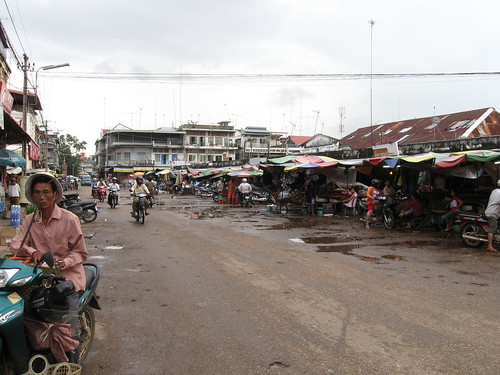
In some of our reading on Cambodia we had read about the Khmer people wearing pyjamas. I assumed that what they wore wouldn’t be what we call pyjamas, but it quickly became apparent that pyjamas is a pretty universal term and a majority of the women spend the day dressed for bed. Pyjama spotting photo below...
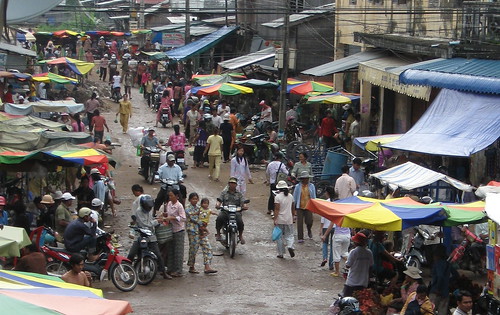
Kratie turned out to be a nice place to spend our first evening in Cambodia, and experience a couple of the local brews, which we needed after that journey!

However, the next day we set off for ........
Phnom Penh
Our itinerary for Cambodia changed in Laos when our SLR camera lens packed up. So we decided to head straight to the capital to give ourselves the best chance of sorting it out and having good pictures for the rest for the country.
We’ve heard many stories about Phnom Penh and most of them not very endearing. It’s dusty, although, we assumed that it would be the same as elsewhere in South East Asia, it managed to raise the bar a notch. Like Yangon it’s edgy, lacks real footpaths and the traffic is crazy, more so than anywhere else. The side of the road to drive on seems to be more of a guideline than a rule and tuk-tuks looking for business are a menace. On one occasion two drivers were almost fighting for our business and we were even asked if we would like a ride straight after leaving another tuk tuk! Despite this we loved Phnom Penh, but understand that if this was the start of our trip our opinion could be different, as like Indonesia it’s a little in your face. We also enjoyed Phnom Penh as sorting out the camera was painless. With no tax it worked out as one of the cheapest places to fix the camera.
One thing that wasn’t going to be an unexpected misrepresentation was the history of Cambodia. The country has a dark past and the worst of it very recent. From 1975-79 the ’Khmer Rouge’ under the leadership of Pol Pot inflicted one of the bloodiest revolutions in history, with over 3 million or a fifth of the population dying as a result of the their atrocities. It’s abhorrent to think that born at the same time but in a different place we too would have experienced the terror of the ’Khmer Rouge’ and that everyone one we meet of our age or older lived through the horror.
On my birthday we decided to visit Tuol Sleng. Tuol Sleng started life as a school, however, during the time of “Democratic Kampuchea” it was turned into Security Office 21 or simply S21, an interrogation and torture centre and today it’s a Genocide Museum.
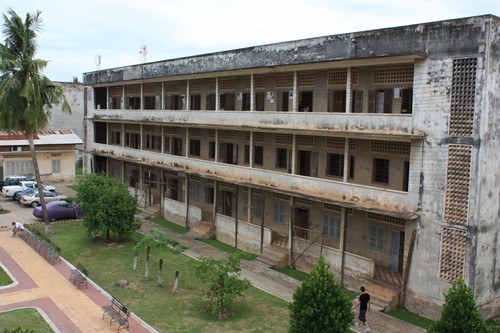
For all the wrong reasons this will go down as one of my most memorable birthdays. The museum is haunting, both in showing the darkest side of human nature and that you can see both it’s use as a school and a place of incomprehensible horrors.

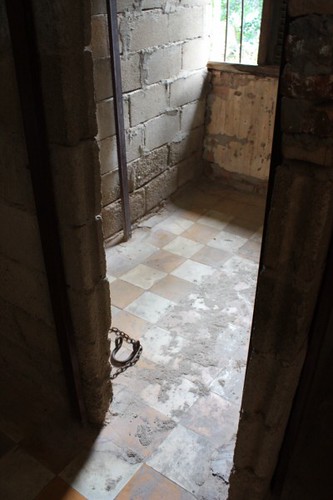
The museum opened eight months after it’s true use was discovered and for that reason it’s well preserved, which is both a good and a bad thing. It’s not hard to imagine the horrors that transpired because you don’t have to imagine much. It’s almost as if only the bodies and the blood have been removed from the scene of the genocide.
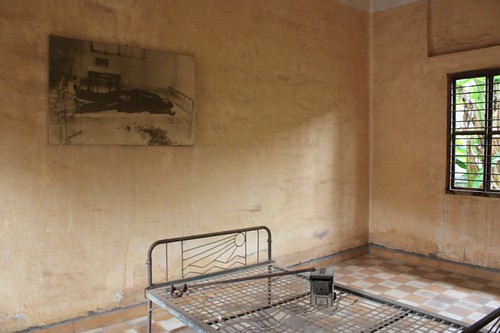
The black and white photographs of the men, women and children who were sent to Tuol Sleng (only 4 people sent there survived) are heartbreaking, depicting women with their children and the fear in the eyes of some clear to see.
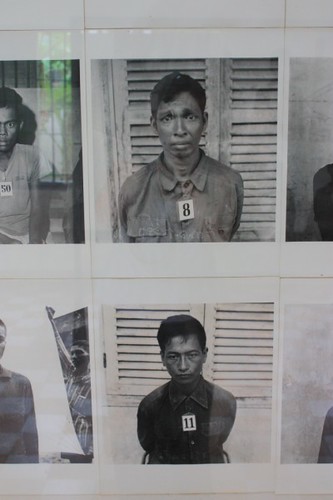
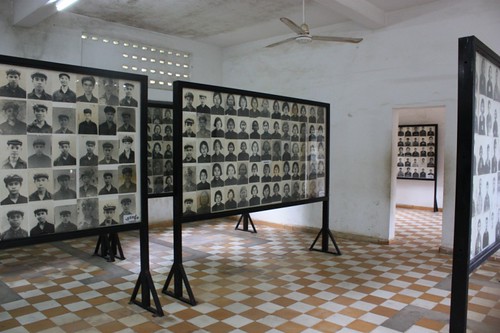
It almost felt wrong after our moving day but in the evening we went to celebrate the rest of my birthday and the fact that Cambodia is moving on from the horrors of its past, determined to make sure that history doesn’t repeat itself. So we headed for cocktails, and a beer of course, at the FCC bar on Sisowith Quay.
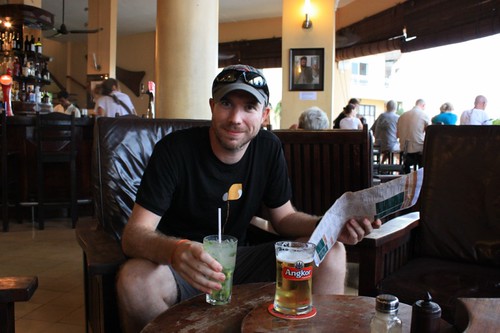
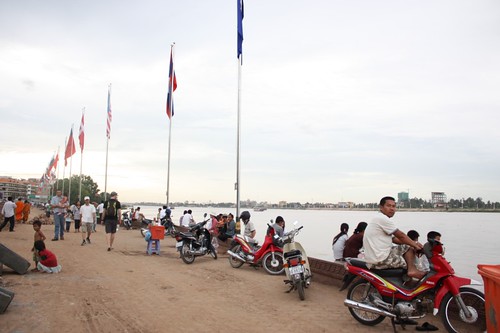
The next day we headed to Choeung Ek which due to it’s proximity to Phnom Penh is the most famous, but by no means the biggest ‘killing field’ from the Khmer Rouge era. It is made up of 129 mass graves and is the resting place approximately 17,000 men, women and children, including all those in the black and white photographs at S21.
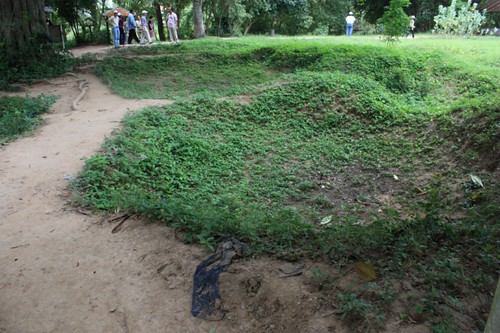
9000 of the bodies have been excavated and the skulls are now displayed in a memorial stupa within the grounds
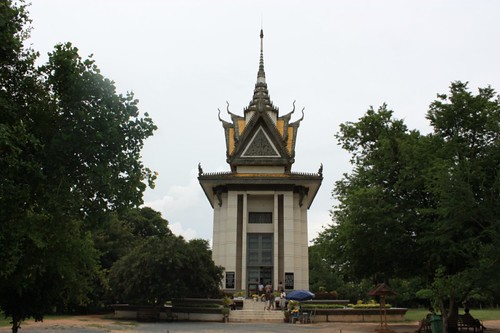
Unlike S21 most of the remnants of the suffering have been removed from the killing fields, but it doesn’t detract from its horror. Walking around the fields, clothes and shards of bone can be seen buried in the ground.
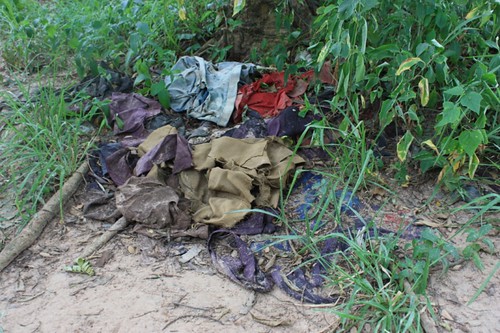
Like Tuol Sleng, the Killing Fields of Choeung Ek are a poignant and memorable tribute to those that lost their lives during the Khmer Rouge period of Cambodian history and a vivid reminder of the ugly side of human nature.
Ryan & Jo
Photos http://www.flickr.com/photos/dojo77/collections/72157621880891834/